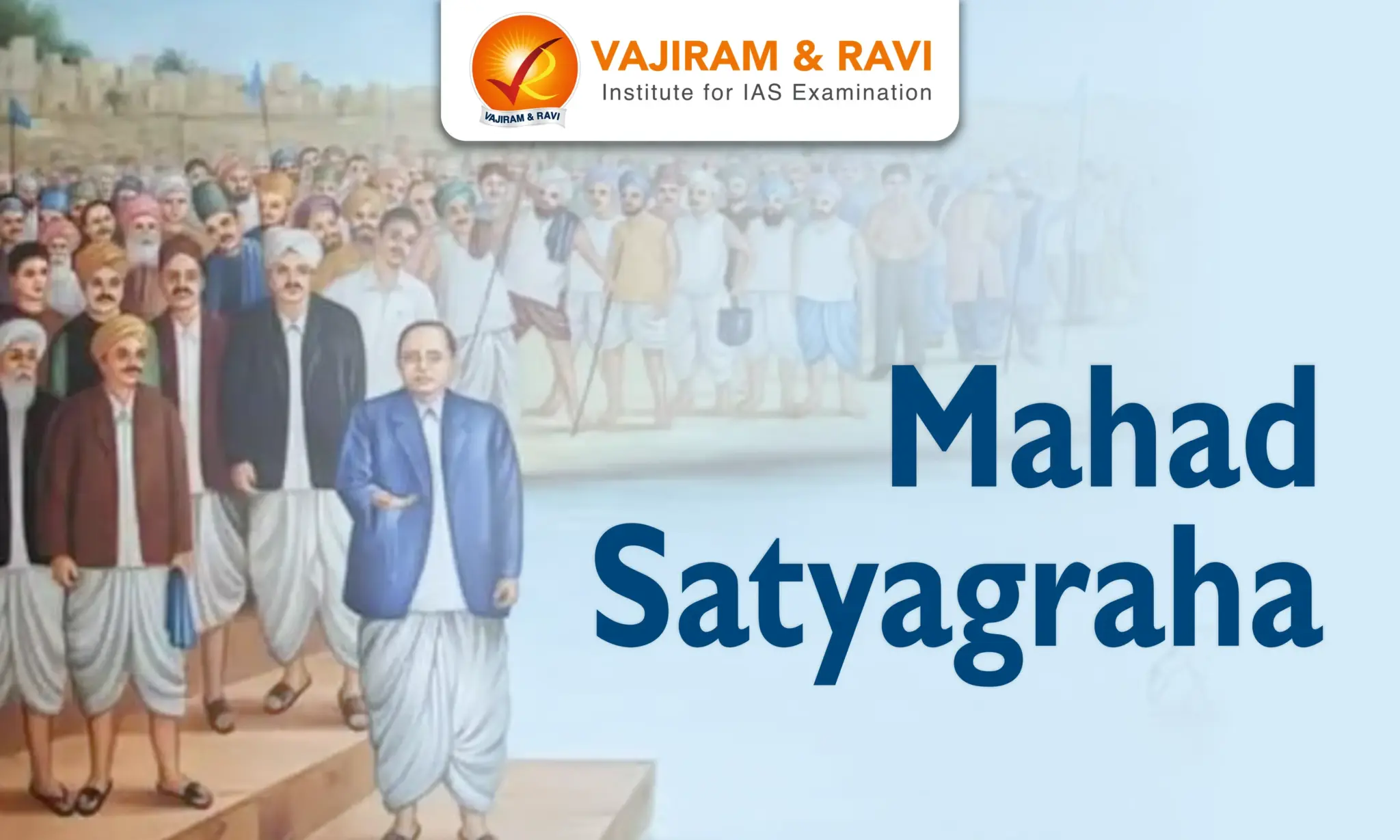The Mahad Satyagraha, initiated in 1927 by B.R. Ambedkar, was a landmark movement aimed at challenging caste discrimination in India. This significant protest focused on the right of the Dalit community to access the Chawdar Tank in Mahad, Maharashtra, which had been traditionally denied to them.
The Satyagraha symbolized a broader struggle against the oppressive caste system and drew attention to the injustices faced by Dalits. By publicly drinking water from the tank, Ambedkar and his followers engaged in a courageous act of defiance, inspiring future movements for social justice in India.
Mahad Satyagraha Background
The Indian caste system historically marginalized untouchables, known as Dalits, by segregating them from other Hindu castes. This segregation meant that they were prohibited from using public water bodies and roads designated for use by higher castes.
- In August 1923, the Bombay Legislative Council passed a resolution advocating for the rights of the depressed classes, allowing them access to government-built and maintained facilities.
- Following this, in January 1924, the municipal council of Mahad, part of the Bombay Province, passed a similar resolution to implement the act.
- However, the effort faced strong opposition from Savarna Hindus, leading to its failure in practical enforcement.
Mahad Satyagraha Events
On March 20, 1927, Dr B.R. Ambedkar led a procession of approximately 2,500 Dalits through Mahad to the Chawdar Tank, a public water source from which they were historically barred. In a powerful act of defiance, Ambedkar drew water from the tank and consumed it, igniting significant protests from the caste Hindu community.
- Later in December 1927, Ambedkar and his supporters symbolically burned the ‘Manusmriti’ at the same location, signaling their rejection of caste-based inequalities and advocating for social justice.
Mahad Satyagraha Legacy
The legacy of the Mahad Satyagraha is profound, as it marked a significant step in the fight against caste discrimination in India. It inspired future movements and became a reference point for Dalit activism. The event also strengthened the resolve of the Dalit community to demand their rights and paved the way for further social reforms. As a testament to its enduring significance, March 20th, the day of the Satyagraha, is now observed as Social Empowerment Day in India.
Last updated on December, 2025
→ Check out the latest UPSC Syllabus 2026 here.
→ Join Vajiram & Ravi’s Interview Guidance Programme for expert help to crack your final UPSC stage.
→ UPSC Mains Result 2025 is now out.
→ UPSC Notification 2026 is scheduled to be released on January 14, 2026.
→ UPSC Calendar 2026 is released on 15th May, 2025.
→ The UPSC Vacancy 2025 were released 1129, out of which 979 were for UPSC CSE and remaining 150 are for UPSC IFoS.
→ UPSC Prelims 2026 will be conducted on 24th May, 2026 & UPSC Mains 2026 will be conducted on 21st August 2026.
→ The UPSC Selection Process is of 3 stages-Prelims, Mains and Interview.
→ UPSC Result 2024 is released with latest UPSC Marksheet 2024. Check Now!
→ UPSC Prelims Result 2025 is out now for the CSE held on 25 May 2025.
→ UPSC Toppers List 2024 is released now. Shakti Dubey is UPSC AIR 1 2024 Topper.
→ UPSC Prelims Question Paper 2025 and Unofficial Prelims Answer Key 2025 are available now.
→ UPSC Mains Question Paper 2025 is out for Essay, GS 1, 2, 3 & GS 4.
→ UPSC Mains Indian Language Question Paper 2025 is now out.
→ UPSC Mains Optional Question Paper 2025 is now out.
→ Also check Best IAS Coaching in Delhi
Mahad Satyagraha FAQs
Q1. What is Mahad Satyagraha? +
Q2. What is the story of Mahad?+
Q3. In which district is Chavdar Tale?+
Q4. What was the aim of Mahad Satyagraha?+
Q5. Who started the Mahar movement?+
Tags: mahad satyagraha quest

















